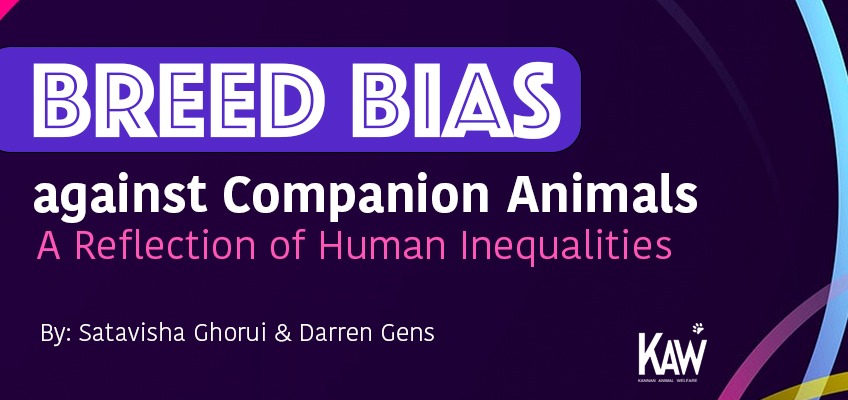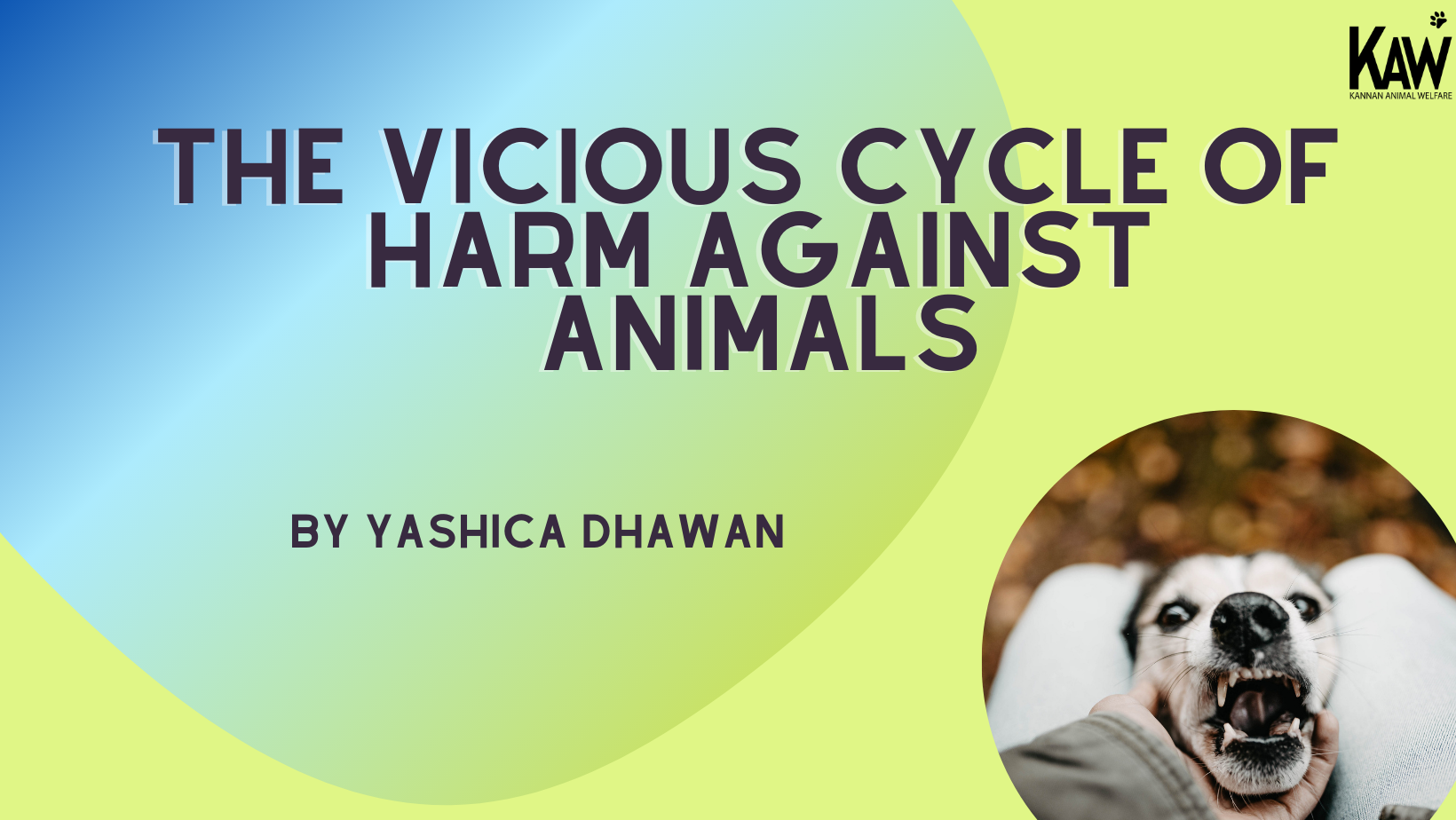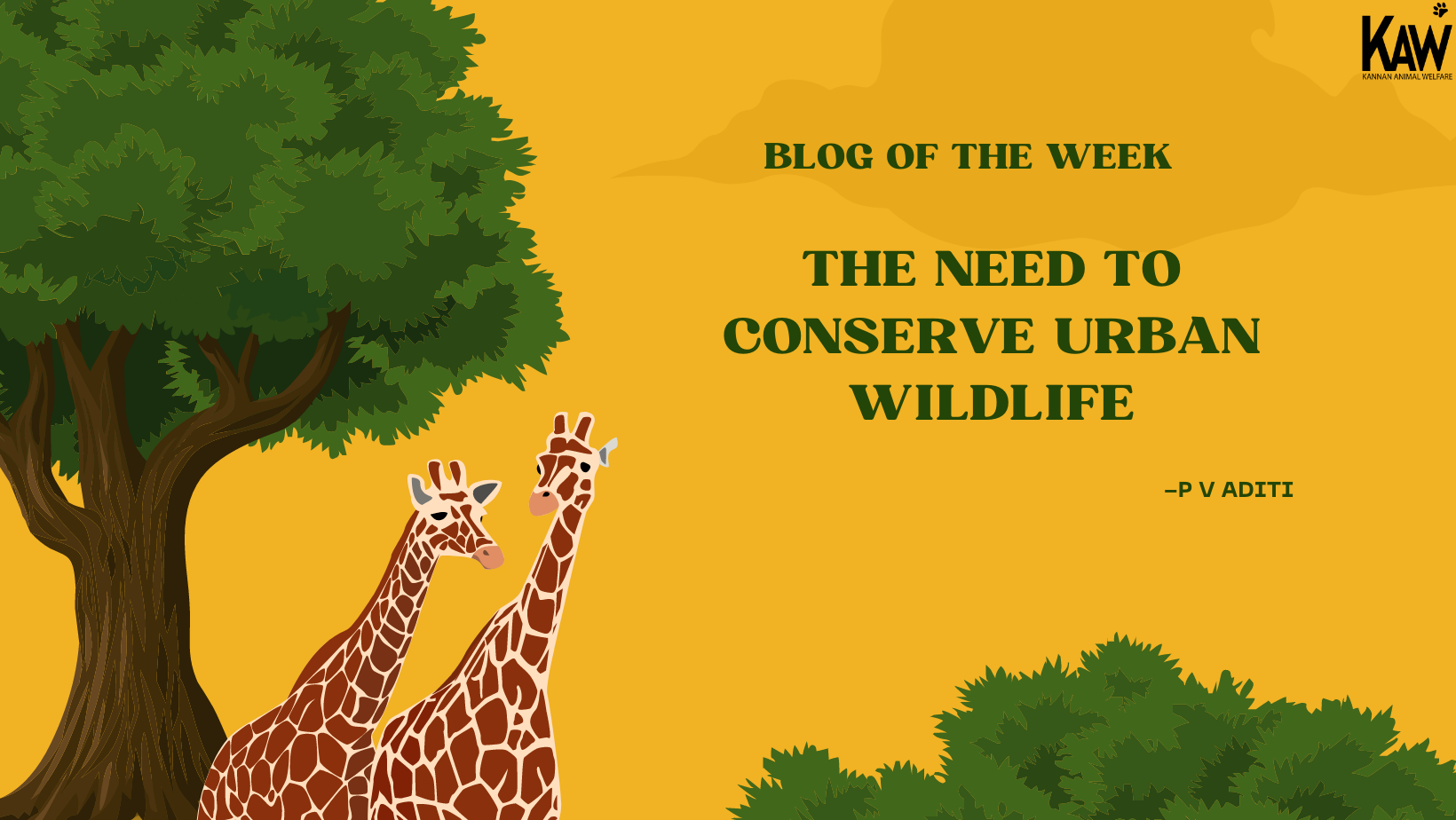Breed Bias against Companion Animals: A Reflection of Human Inequalities
By Satavisha Ghorui & Darren Gens
“Don't judge a book by its cover” - a common saying, one that is well-known but largely unheeded, simply tells us to not determine the worth of something by its external appearance or perceived value. How many people truly abide by this principle? Our experiences and assumptions about the world - especially places, people, and ways of thinking - deeply influence our individual choices and reflect the values we uphold.
The same happens when it comes to choosing companion animals. As we gravitate toward our “preferred” breeds for animals, our assumptions about different breeds often come at the expense of those considered less desirable. These assumptions, in subtle ways, translate human social issues onto our relationships with animals.
What is breed bias?
Our understanding of bias is a strong feeling that is in favour of or against one group, often not based on fair judgement. Usually, bias against particular breeds or types of dogs is not grounded in fair judgement; instead, it arises from a range of social factors. These factors encourage people to discriminate further against certain breeds, identifying them as undesirable or disposable.
The way people feel about certain breeds can relate to factors such as purity of bloodline or their designated monetary value. Sex and perceived capability also impact how we see animals, as they contribute to how we define their worth.
In many ways, this sounds familiar. The same systems that oppress humans, end up oppressing companion animals as well. Thinking about this in more concrete terms raises questions about what discrimination can look like in our relations with animals.
For instance, if humans value a female dog for her ability to reproduce and generate profits, why does she remain highly vulnerable to abuse? If a dog walks on only three legs but has a heart full of love, why is he so much less likely than non-disabled pups to receive adequate care in his urban territory or to become adopted from a shelter?
By understanding some of the origins of breed bias, we can better understand the inequalities between humans and animals.
Purebred dogs & the pet industry
It is well known that purebred dogs tend to suffer from congenital issues due to poor breeding practises. In addition, many “pedigree” dogs are unsuitable for our Indian climate. Breeds like Huskies and St Bernards, while popular amongst the rich and elite Indian population as an indicator of social status, suffer from health problems when forced to live in environments which do not suit them, such as Delhi and Mumbai.
Our local Indian and mixed heritage dogs, contrastingly, fare much better in Indian cities. A breed that has evolved naturally to live in such an environment will always adapt better to its weather conditions; such breeds are also generally hardier and healthier. Survival of the fittest is a sad reality for Indian street dogs, but it results in intelligent, agile, and robust dogs that suffer from fewer health problems and have strong immune systems.
In order to strengthen relations between humans and animals, we need to recognise the harmful effects of status-oriented pet ownership and how it reinforces a problematic relationship towards animals.
Why does breed bias exist?
The role of the media
There are many reasons that biases against particular breeds or types of dogs are formed. The media, as it always does, plays a huge role in the public’s perception of dogs. Sweeping statements, sensationalizing reports, and negative publicity can lead to negative impressions and cause people to consider certain breeds as “undesirable.” Situations such as dog attacks are presented in an exaggerated way that instills fear in the mind of the reader; the desire to protect oneself may come out in harmful ways, such as the culling of dogs one sees as a threat.
Breed bias unfairly labels a group of canines as unattractive, volatile, unworthy, and unpredictable- leading to unwarranted fear in the minds of the public, especially when supported by media frenzy that reinforces these fears and prejudices.
These skewed representations of dogs usually ignore the human element of such incidents- situations - like abuse, neglect, and improper socialization - that may have led to the violent behaviour of these dogs. Instead of focusing on animals which endure domination and exploitation at the hands of humans, we could be looking at the situation differently: How can we prevent harmful conditions - the same conditions that normalise treating animals as disposable - from arising in the first place?
How fears translate into laws
Common social fears, reinforced by media representations, tend to materialise into institutional rules and regulations. An example of this is Breed Specific Legislation (BSL) in the United States. BSL is infamous for targeting certain breeds, including those that resemble any of the dogs they designate as “dangerous” breeds. This legislation introduces outright bans or restrictions: They enforce muzzling and mandate spaying and neutering to prevent reproduction. Such laws are generally created on the assumption that some dog breeds are threats to the public.
These same dog breeds are usually used by humans in illegal dog-fights, or as members of the police and army, again reinforcing their “ferocious” reputation. Instead of people accepting that training animals for violence can result in attacks on members of the community, regulations such as the BSL are deployed to paint all dogs of a certain breed as violent, unpredictable, or aggressive.
The psychological phenomenon behind breed bias
There are other social factors which explain the prevalence of breed bias today. One such element is a psychological phenomenon called “ingroup cohesion.” In this, underlying biases tend to “pull” people towards judgements with which they are already familiar.
For example, if you have grown up with a Labrador that you loved, you are more likely to think of Labradors positively for the rest of your life. On the other hand, sensationalist news headlines - such as “aggressive Pitbull attacks 5” - make viewers think negatively about the breed and cause fear against them.
How history impacts modern canines
Historical relations between humans and animals can also be the causes of discrimination against certain dog breeds. Dobermans were bred to be “police-soldier dogs” and were used for the same till as recently as World War 2. German Shepherds have also been recognised as exceptionally intelligent dogs, and were spoken of highly after World War 1 by soldiers who fought alongside them. The fact that these dogs have been used by different armies and police forces have added to their reputation as fearsome and dangerous.
Contrastingly, certain dog breeds - such as Maltese, Pekingese, Pugs - were known as breeds owned by royal families, and they developed a reputation for being high-status and elegant dogs. Factors such as racism, sexism, ableism, and ageism not only continue to affect our country, but also contribute significantly to our choice of companion animals and breeds. Ideas of owning a purebred dog are often related to pre-existing notions of purity, colorism, social status, and prestige. The concept of “royal blue blood” has influenced our society to such an extent that we tend to form opinions on certain breeds of dogs based on their outer appearance, quality of fur, temperament, and historical status in royal households.
Celebrity status also impacts a breed's popularity. For example, the celebrity-dog “Tuffy” from the Bollywood film Hum Aapke Hain Kaun (1994) revolutionized the status of the Indian Spitz for generations to come!
The ongoing biases towards these breeds, whether positive or negative, have never been in the control of the dogs. Social relations among humans have shaped these opinions and have caused people to continue viewing certain dogs as vicious, while depicting others as desirable.
The impact of consumerism
Consumerism has shaped our lives, and continues to do so even in terms of our companion animals. Ownership of certain dog breeds has strong ties to class distinctions and social status - certain breeds have a high monetary value and therefore remain exclusive and elite.
Due to post-colonial mentalities, many people in India have in them the desire for “foreign approval.” The association with Western society though lifestyle choices also highlights why people often seek foreign, purebred dogs and reject local breeds or mutts.
If we cannot address the ways in which we impose human inequalities and ideologies on animals, numerous companion and community animals will face an increasingly vulnerable and delicate existence.
What are the social impacts of breed bias?
The desire to own a purebred or foreign-origin dog has generated uncontrolled and unsupervised breeding at an alarming rate. Further, breed bias has induced the illegal transport of foreign breed puppies across borders, only for them to be abandoned on the streets due to improper knowledge on raising them. Most animal shelters across the National Capital Region (NCR) are full to capacity, and many beyond even that. Despite a ban imposed in May 2016 on the import of dogs for breeding and commercial purposes, many illegal breeding centers continue to operate in the capital.
A transformation of people’s attitudes towards animals - from commodification to companionship - is necessary if we hope to combat this industry that in India remains largely abusive.
Negative perceptions against certain types of dogs also condemns many of them to death because they become considered as unadoptable. Inbreeding and over-breeding of “desirable” dogs have caused the creation and rise of puppy mills.
In puppy mills, a breeder forces the female dog to endure countless and repeated forced pregnancies, leading to a massive deterioration of her health and the inability to care for her puppies. This causes chronic diseases and problems in both the mother and the pups. The insufficient Prevention of Cruelty to Animals Act 1960 often allows the abusers of these dogs to evade responsibility and proportional punishment, if any at all. This act in fact does not apply to those who abandon dogs carelessly at shelters. Shelters across our country are therefore treated as dumping grounds for any unwanted dogs, who live out their lives in those crowded spaces, waiting for a family to adopt them.
How does India work on curbing breed bias?
It is common knowledge that India has a large indigenous dog population that are considered stray animals. The Law Commission of India has recommended new regulations on breeding in order to address the prevalence of animal abuse that occurs for commercial gain.
Directed by the Delhi High Court, The Ministry of Environment, Forest and Climate Change has notified The Prevention of Cruelty to Animals (Dog Breeding and Marketing) Rules 2017 in order to protect canines that are in the hands of breeders.
Activists believe that certain measures - such as microchipping dogs, online registration of animals, and strict protocol for breeders with strict enforcement - may help to fight the widespread abuse caused by breed bias.
It remains critical that we, as a society, continue to combat all forms of injustice and cruelty towards animals, as well as their ideological origins in human systems of social oppression. We must aim to rebuild our world to embody relations of care, respect, reciprocity among humans and animals alike.






